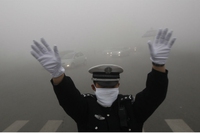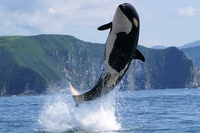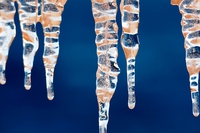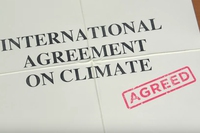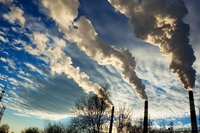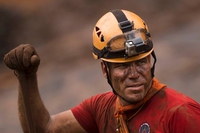
Mud, toxic substances, and death. Two dams have collapsed in Brazil
The dam burst of 5 November is one of the worst mining disasters in Brazil’s history, and could have irreparably contaminated the area.
The dam burst of 5 November is one of the worst mining disasters in Brazil’s history, and could have irreparably contaminated the area.
La monarchia araba ha annunciato un calo delle emissioni di gas ad effetto serra. A patto però che i profitti dalle esportazioni di petrolio restino alti…
I dati sono allarmanti. Il particolato è 50 volte superiore ai livelli ritenuti sicuri dall’Oms, mentre una spessa coltre ha invaso Shenyang.
Il parco di San Diego ha annunciato che dal 2017 intende eliminare gradualmente gli spettacoli che vedono coinvolte le orche.
Glyphosate, one of the world’s most used herbicides in agriculture, has devastating, dramatic effects on the health of people living in very close contact with it. This time, the warning does not come from environmental organisations or WHO’s agencies, but from a photo feature. Pablo Ernesto Piovano is an Argentinian photographer that decided, in 2014, to
He’s one of the most important Italian economists in the world, as well as director of the International Centre for Climate Governance (ICCG). That’s why Carlo Carraro was chosen by the Intergovernmental Panel on Climate Change (IPCC), depending upon the United Nations, to draw up the renowned reports on global warming that politicians should follow to adopt concrete
La deforestazione, le piantagioni di palma da olio e il conflitto tra uomo e oranghi. Una delle peggiori crisi ambientali del pianeta racchiusa in un’immagine.
#ActinParis. Taking action against climate change, in Paris. There is no choice: during the 21st edition of the climate conference (COP21), a clear, convincing, and binding deal has to be reached. Negotiations are on the right path, but a fistful of pressure never hurts. So let’s make our voice heard by the leaders of over
Greenhouse gas emissions in the atmosphere, i.e. carbon dioxide (CO2), methane (CH4), and nitrogen dioxide (NO2), hit a new record. This is what the World Meteorological Organisation (WMO) revealed in its latest “Greenhouse Gas Bulletin”: between 1990 and 2014 there was a 36% increase in radiative forcing (warming effect on our climate), due to greenhouse gases
The only glacier of the Apennine Mountains, the Calderone, will disappear if current melting rates are not curbed. Over the past 50 years, the European southernmost glacier lost 33 per cent of its extension, shrinking from a surface of 0.07 square kilometres in the early 1990s to only 0.04 square kilometres. The problem has been highlighted

